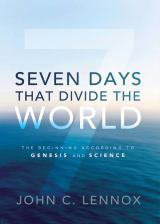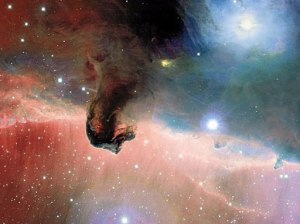New theory explains mystery of excess of matter in our Universe
It’s being hailed as the most significant breakthrough since Hoyle proposed the Big Bang theory.

Horsehead Nebula in Orion (representative-colour image by NASA from the Canada-France-Hawaii Telescope in Hawaii)
Symmetry would require the production of exactly equal numbers of particles and their corresponding antiparticles in the earliest instants of the Big Bang, when radiation and particle-antiparticle pairs existed in equilibrium. However, these pairs would have irreversibly annihilated each other as our Universe cooled, eventually leaving nothing behind except the Cosmic Microwave Background. The persistence of matter is only one of several disturbing asymmetries; another such is the violation of parity in beta-decay, for predicting which Lee and Yang received the Nobel Prize in Physics in 1957.
Today, however, Dr Bubba Majntser, of Mierda de Toros University, has announced his Even Bigger Bang theory, according to which the formation of our Universe (from nothing, as so eloquently described by Krauss) was, of necessity, accompanied by the formation of an anti-Universe. The excess matter in our Universe U is then precisely balanced by an equivalent excess of antimatter, while the anti-Universe U’ must, according to the well-known properties of antimatter, be proceeding backwards in time. This ensures that U and U’ can never come into contact with each other, which is as well, since if they were to do so the result would be complete mutual annihilation. Moreover, each particle in our Universe is quantum mechanically entangled with its corresponding particle in the anti-Universe, so that if the descriptor U of our universe violates some symmetry law, that law is nonetheless rigidly obeyed by the direct product U x U’ of the descriptors of Universe and anti-Universe. Similar considerations will apply to every other Universe in the Multiverse. Majntser has christened this principle Bifurcated Symmetry, or BS.
 But his theory, for all its elegance, has already attracted criticism. The Vatican has condemned it on the grounds that it violates Free Will; if a person in the anti-Universe is necessarily constrained by entanglement to behave in exactly the same way as the corresponding person in our Universe, they cannot both be functioning as autonomous agents. Shakespeareans have pointed out that the theory violates the fundamental maxim that “What’s done cannot be undone,” since according to BS, whatever is done in U is being undone in U’, and vice versa, and this happens all the time. There is also disagreement as to whether the expression U x U’ should be replaced by U* x U’, to cover cases where time is complex, or even under some circumstances, as suggested by Hawking, purely imaginary. Strict Occamists denounce the theory as involving unnecessary
But his theory, for all its elegance, has already attracted criticism. The Vatican has condemned it on the grounds that it violates Free Will; if a person in the anti-Universe is necessarily constrained by entanglement to behave in exactly the same way as the corresponding person in our Universe, they cannot both be functioning as autonomous agents. Shakespeareans have pointed out that the theory violates the fundamental maxim that “What’s done cannot be undone,” since according to BS, whatever is done in U is being undone in U’, and vice versa, and this happens all the time. There is also disagreement as to whether the expression U x U’ should be replaced by U* x U’, to cover cases where time is complex, or even under some circumstances, as suggested by Hawking, purely imaginary. Strict Occamists denounce the theory as involving unnecessary  duplication of entities, while Richard Dawkins has already tweeted his opinion that it is insufficiently critical of religion. The Oxford theologian John Lennox, on the other hand, denounces the theory as undermining his attempts to reconcile science with Genesis, since it requires either 12 (6 + 6) or 0 (6 + [-6]) Days of Creation, whereas the correct number is, of course, 7.
duplication of entities, while Richard Dawkins has already tweeted his opinion that it is insufficiently critical of religion. The Oxford theologian John Lennox, on the other hand, denounces the theory as undermining his attempts to reconcile science with Genesis, since it requires either 12 (6 + 6) or 0 (6 + [-6]) Days of Creation, whereas the correct number is, of course, 7.
The most serious criticism, however, comes from the UK’s National Union of Students, who are demanding that the author of this post be no-platformed for cultural imperialism, micro-aggression by ridiculing a non-Anglophone University, and using sexist and ageist language.
Hoyle himself could not immediately be reached for comment.
Posted on April 1, 2016, in Philosophy, Religion, Science and tagged Big Bang, Fred Hoyle, Free Will, John Lennox, Lawrence M Krauss, No-platforming, NUS, Stephen Hawking. Bookmark the permalink. 14 Comments.


Damn you, Braterman. This is uncommonly close to a notion I’ve been playing with for an SF short story — which now of course I can’t write because you got there first. You call the scientific principle involved BS, had I written the story I’d have called it “necessary suspension of disbelief.”
Oooo. I’m so vexed I think I could swallow a pint. In fact, I think I’ll go and do just that.
LikeLike
PS:
Hoyle himself could not immediately be reached for comment.
I see you duck the issue of whether or not the anti-Hoyle could be reached.
LikeLiked by 1 person
I almost swallowed it whole – but then I got to the BS part and looked at the date …
LikeLike
Wow,got me, took me until the 3rd paragraph to remember what day it is. Well done.
LikeLike
It appears we have a new Master of Poe’s Law
LikeLike
I wasnt fooled – Hoyle didnt invent the big bang theory. He coined the term as a pejorative. He favoured steady state.
LikeLike
Indeed – intended as immediate giveaway to the whole thing being an in-joke. Big bang goes back to LeMaitre and Hoyle’s thing was, as yuo say, its rival Steady State. But some people got as far as the third paragraph before looking at the date 😉
LikeLike
Well played, sir. Well played.
LikeLike
Sounds like the kind of university where I could excel. But can someone please put me out of my misery and explain the doctor’s name?
LikeLike
Bubbamaintzer is Yiddish (American readers will probably recognise the word) for old wive’s tale; bubba, Slavonic, old woman; ma’aseh deed (Classical Hebrew) or tale (Mishnaic Hebrew). Hence the references to ageism and sexism.
LikeLike
Ah! I went looking for ‘Bubba Muncher’ and found an obituary to someone by that name who died just a few weeks ago.
LikeLike
1.4.16.
LikeLike
Or, across the Atlantic, 4/1/16
LikeLike
Or, across the Atlantic, 4/1/16
Celebrated by AiG as Pi Day.
LikeLike